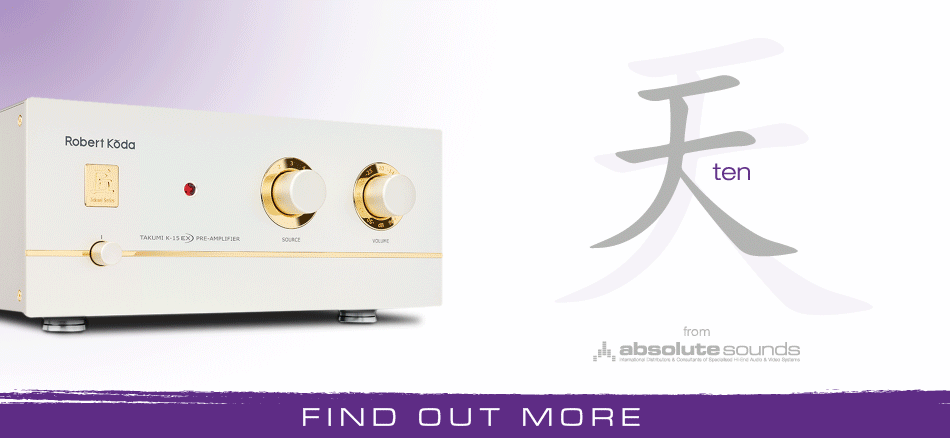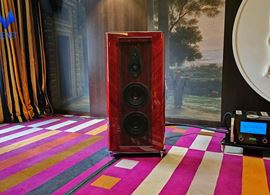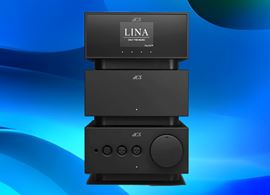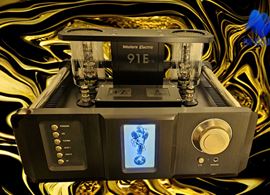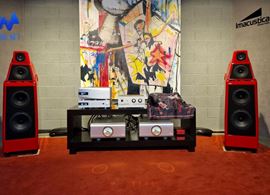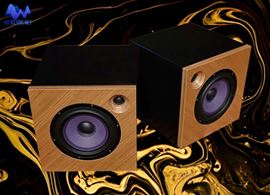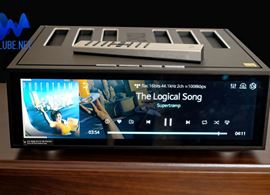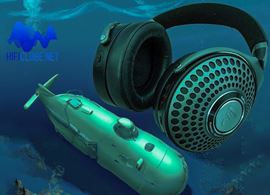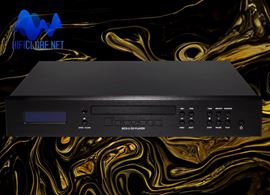In 1970, McIntosh's chief engineer, Roger Russell, designed the McIntosh ML1, a four-way monitor with a 12-inch woofer in a sealed enclosure. This was before I started my career as an audio critic, but at that time, I was already building my own sound systems using components ordered from England.
The original ML1 laid the foundation for the new ML1 II that I recently auditioned at Ajasom. This event was also a preview of the Esoteric Grandioso T1 magnetic suspension turntable paired with a Murasakino Sumile cartridge, and both sounded equally impressive.
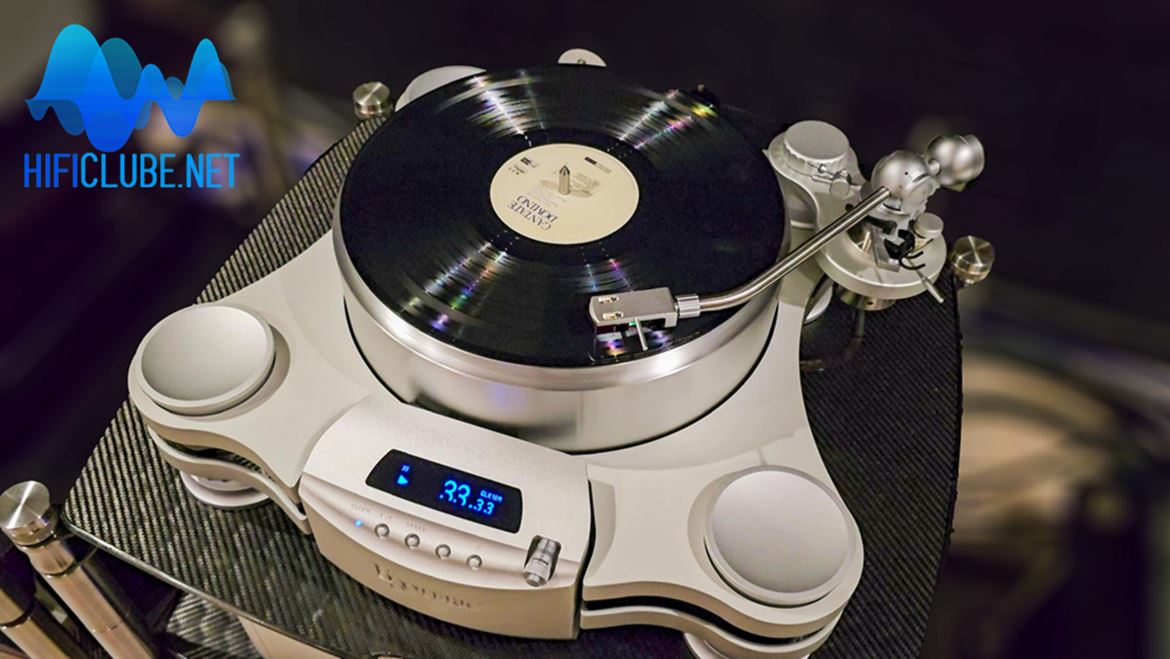
Esoteric Grandioso T1 magnetic suspension turntable
I’m familiar with the ML1 IIs, having first heard them at the Kempinski Hotel in Munich during a European press presentation. A video I recorded from that event has since garnered 13K views, but the recording at Ajasom sounds noticeably better.
Retro-inspired design
The new retro-inspired design maintains the original dimensions and sealed enclosure but adds a wooden base with two feet and a prominent aluminum logo. This elevates the 12-inch woofer from the floor and tilts the cabinet back for improved coupling with the room and alignment with the midrange and treble drivers.
The new grille's frame is made from natural walnut and is the heaviest I've ever held in my hand. The fabric is transparent, like a spider web, and resistant to the scrutiny of curious fingers and pets. Unlike the grills, the boxes are made from high-density pressed wood and then veneered in walnut, but they still weigh over 30 kilos each! So, they're not for shelving. The terminals allow for bi-amping.
The ML1 II may not have the high wife-acceptance factor of speakers like the Kharma, which were also on display in the room and are in a different league. However, the ML1 II exudes a timeless class born of craftsmanship, and they truly honor their family name: McIntosh!
Vintage revival done right
Though the design may seem dated (a hallmark of their vintage appeal), the McIntosh ML1 II are technically modern, particularly in driver technology. For example, the 12-inch woofer is an engineering masterpiece with a carbon cone and a motor that uses Magnetic Circuit Design technology, which reduces distortion, increases heat dissipation efficiency, and supports 600W of power. The speakers also have an automatic fuse that protects them if pushed too hard, keeping them safe until they cool down.
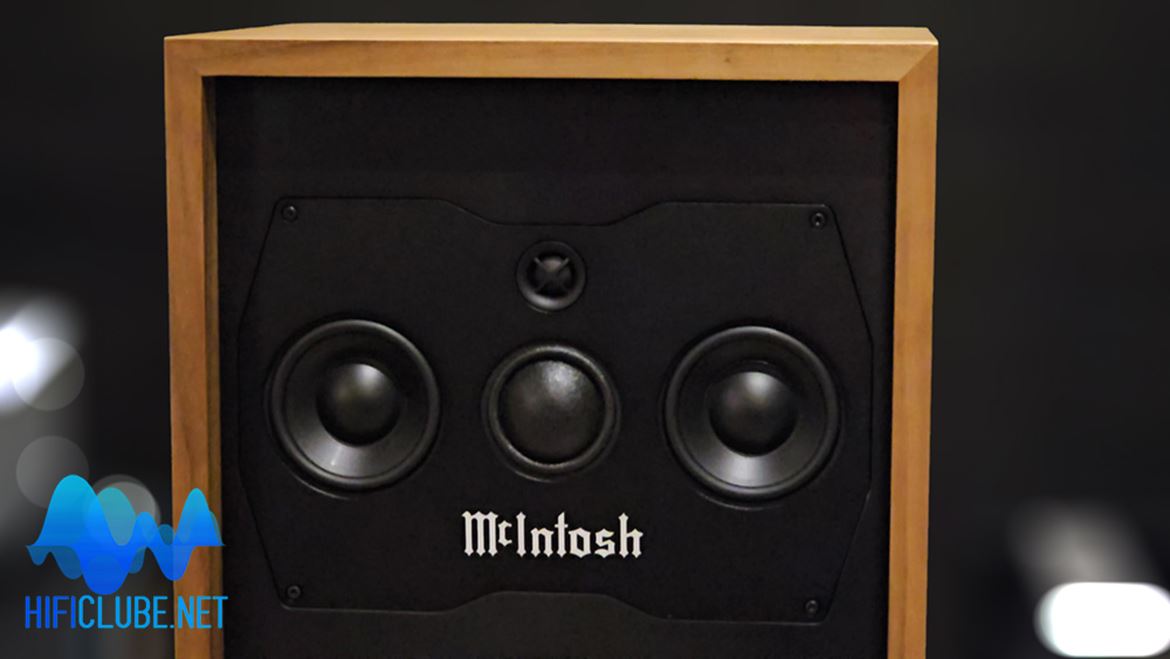
The new speaker setup features a symmetrical array of drivers mounted on an aluminum plate screwed to the baffle.
The new speaker setup features a symmetrical array of drivers mounted on an aluminum plate screwed to the baffle, which also differs from the original speaker. Instead of a single 8-inch driver with a paper cone, there are now two 4-inch mid-bass drivers with polypropylene cones. Additionally, there is a 2-inch soft dome mid-high unit and a titanium dome tweeter. The cut-off frequencies are 180 Hz, 500 Hz, and 4500 Hz.
As I realized during the audition, getting everything to work together is quite a challenge. Creating a coherent and stable stereo image is no easy feat, yet the McIntosh ML1 II excelled at both.
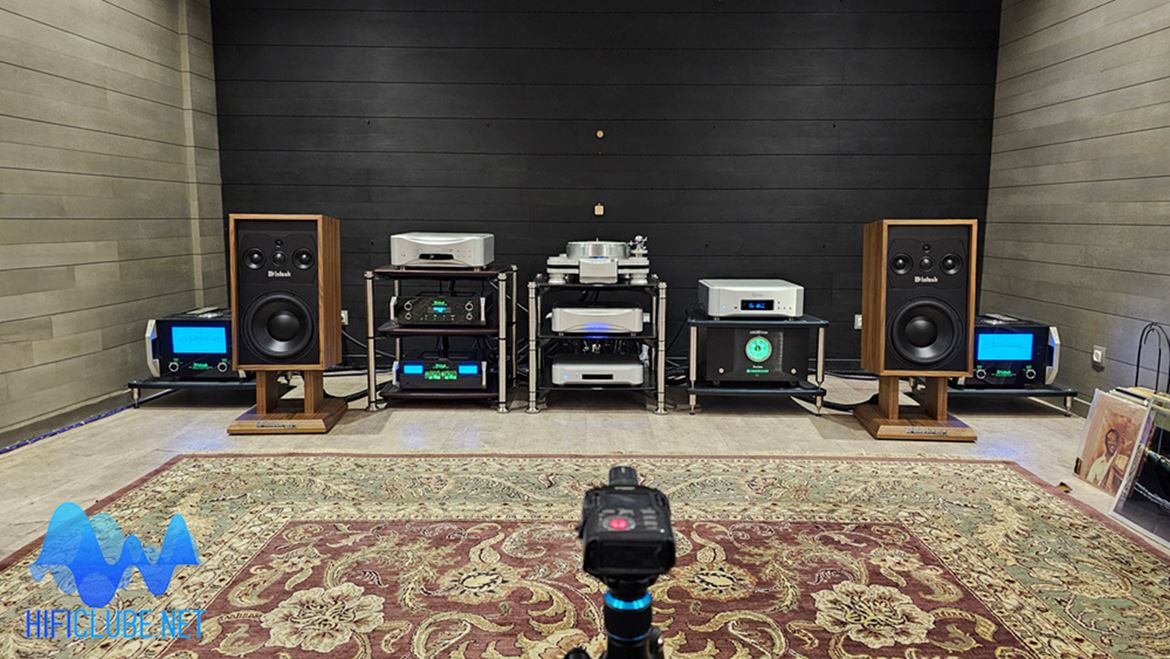
System setup at Ajasom Auditorium, Lisbon
Listening at Ajasom
In the Ajasom auditorium, the system being auditioned consisted of:
- Turntable - Esoteric T1 Grandioso + Murasakino Sumile
CD - Esoteric K1X SE Grandioso
Streamer - Esoteric N-01XD
Clock - Esoteric G-02X
Pre - McIntosh C12000 75th Anniversary
Power - McIntosh MC1.25KW 75th Anniversary
Speakers - McIntosh ML1 MKII
Power and speaker cables - Shunyata Sigma and Alpha
Interconnects - Furutech DAS4.1 and Kimber Select
Racks – Basso Continuo AEON X and AEON 2.0
I positioned the Nagra SD recorder as shown in the photo and listened to tracks selected by Jorge Mendes and Nuno Cristina, some of which I knew well and others not so much. The ML1 IIs were playing without grilles, although they have been tuned to play better with the grilles on. They deliver a more linear response between 1000 and 2000Hz, perhaps because the frame acts as a waveguide.
The bass is dry, controlled, and defined, without the excesses of reflex systems, and with good extension. However, on the more familiar tracks, such as those I recorded in the video, I noticed it lacked body in the lower-midrange registers. In other words, I prefer to hear more chest in Carlos do Carmo's voice and more horn in Gene Ommens' saxophone.
Listening session video
Nota: Watch in 4K fullscreen, and listen with headphones.
Fine tuning
Nuno Cristina made some minor changes to the signal being supplied to the Esoteric N-01DX Streamer, and the sound improved slightly. Jorge Mendes adjusted the relative placement of the speakers by a few centimeters, and the sound improved even more. Or maybe it was my brain adapting to the acoustics of the room and the sound of the ML1 II. But if the ML1 II had an associated external equalizer, as the originals had, I'd be tempted to raise it by a dB or two at 370Hz.
Recording devices do not have biases, and the truth is captured raw without human prejudices.
Mind tricks
The remarkable thing is that Carlos do Carmo's voice and Gene Ommens's saxophone sound accurate on the recording, even without equalization. Not to mention the impact and drama of Dominique Fils-Aimée's percussion and voice, which are all present; perhaps this is because recording devices do not have biases and the truth is captured raw without human prejudices, which means I was missing something that might not even be on the original track.
Ajasom deliberately chose not to overly treat the room to avoid significant differences between what is heard in the studio and the client's home. As a result, a slight room reverberation can be heard in the recording, especially when using headphones.
But when I’m there, I don’t perceive the reverberation in the same way because my brain quickly adapts to the reverberation and integrates it as an inseparable part of the ongoing musical process, allowing me to focus on the tone and timbre, which, as we've seen, are often more subjective in appreciation.
Enjoy listening to the McIntosh ML1 II speakers at Ajasom without prejudice, with your ears connected to your brain. And if you can't take your living room with you, bring the ML1 IIs into your living room. They probably won't leave...
Technical specifications
- Frequency Response: 27Hz – 45kHz
- Power: 75 – 600W
- Drivers: 1x 3/4"; 1x 2"; 2x 4"; 1x 12"
- Crossover Frequencies: 180Hz; 500Hz; 4.5kHz
- Dimensions: 381 x 664 x 340mm (W x H x D)
- Weight: 30kg
- Price: €17,110
For more information: AJASOM

